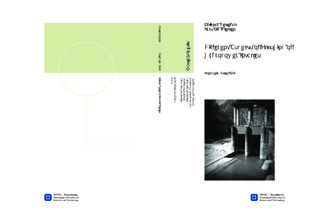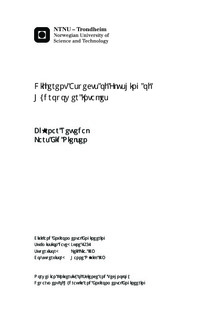| dc.description.abstract | Different design criteria for successful flushing of hydropower headworks have been evaluated. Main focus has been on handling of floating debris for small hydropower plant in Norway, as well as sediment handling for run of the river-projects in sediment-carrying rivers. As a new way of cleaning intake screens clogged by debris, the concept of backflushing has been investigated. The intake screen, called trash rack, is then cleaned by a reveresed water flow over a short period of time, and the clogged material flushed out thorugh a flushing pipe. A physical test tank was developed to evaluate parameters for a successful flushing of trash racks with different degrees of clogging. A test device was developed to evaluate adhesion, i.e. the level of friction between clogged material and the trash rack. The required gross water velocity over a trash rack during flushing for detaching of the clogged material was found to be in the range of 0.1 to 0.2 m/s, with a typical value of 0.12 m/s. The clogged material tend to resist a maximum limit of pressure difference over the trash rack before it detaches. Results are showing a pressure difference resistance in the range of 0.05-0.10 meterWater Column (mWC). The pressure difference prove hard to obtain as parts of the trashrack is cleaned. Hence, a flushing gate should be opened at a high rate to obtain the best flushing efficiency.A field trip to Nepal has been conducted to gain experience in sediment handling, and to work with physical models at HydroLab Pvt Ltd in Kathmandu. Observed intake solutions have been evaluated both against existing theory and results from a physical model study. It has been documented through a model test series that the flushing ability of an undersluice gate is limited to only a few meters upstream of the flushing gate.The limit for flushing by bed transport has been tested in a model, and compared to theory for evaluating initial movement of the sediment bed. Experiments are supporting that Shield s theory of critical shear stress can be used to predict the occurrence of bed movement. Design and operation of settling basins have been investigated, together with the appurtenant different strategies for flushing. The possibility of applying the concept of backflushing of trash racks for headworks arrangements including sediment settling basins have been evaluated. For projects where the trash rack can be located upstream of the settling basin, the combination seems feasible, as parts of the water storage in the settling basin could be used for the backflushing. However, the trash rack should be placed downstream of the settling basins for most Himalayan headworks arrangements, which makes backflushing impossible. | nb_NO |

